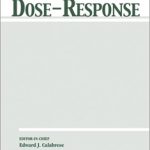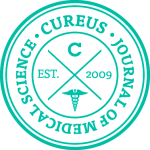D. Dalla Libera, B. Colombo, G. Pavan, G. Comi
Complementary and alternative medicine (CAM) use in an Italian cohort of pediatric headache patients: the tip of the iceberg
Neurol Sciences, 2014, 35 (1), 145-148
The use of complementary alternative medicine (CAM) in paediatric populations is considerably increased, especially for pain and chronic conditions, as demonstrated by epidemiological surveys both in Europe and in the USA. In our study, CAM was used in 76 % patients of a cohort of 124 children affected by headache (age 4–16 years; 67 % female; 70 % migraine without aura, 12 % migraine with aura, 18 % tensive headache according to IHS criteria) consecutively recruited at a Pediatric Headache University Center. CAM was used as preventive treatment in 80 % cases. The main reasons for seeking CAM were: the wish of avoiding chronic use of drugs with their related side effects, the desire of an integrated approach, the reported inefficacy of conventional medicine, and a more suitable children disposition to CAM than to pharmacological compound. Female gender, younger age, migraine without aura, parents’ higher educational status, maternal use of CAM and other associated chronic conditions, correlated with CAM use (p < 0.05). 73 % patients chose CAM also to treat other diseases (i.e. allergies, colitis, asthma, insomnia, muscle-scheletric disorders and dysmenorrhoea). The most assumed CAM were: herbal remedies (64 %) such as Valeriana, Ginkgo biloba, Boswellia serrata, Vitex agnus-castus, passion flower, Linden tree; vitamins/minerals supplements (40 %) with magnesium, 5-Hydroxytryptophan, vitamin B6 or B12, Multivitamin compounds; Homeopathy (47 %) with Silicea, Ignatia Amara, Pulsatilla, Aconitum, Nux Vomica, Calcarea phosphorica; physical treatment (45 %) such as Ayurvedic massage, shiatsu, osteopathy; yoga (33 %); acupuncture (11 %). CAM—often integrated with conventional care—was auto-prescribed in 30 % of the cases, suggested by non-physician in 22 %, by the General Practitioner in 24 % and by paediatrician in 24 %. Both general practitioners and neurologists were mostly unaware of their patients’ CAM use. In conclusion, neurologists should inquire for CAM use and be prepared to learn about CAM therapies or to directly interact with CAM trained experts, in order to coordinate an integrative approach to health, as especially required in paediatric headache patients and their parents. Further studies are required to investigate safety and efficacy of CAM in pediatric headache, as a possible side-medicine to conventional pharmacological approach.







